FW
Fashion trade show Pure London has created a new sourcing event called Pure Origin. This is a platform to unite suppliers, buyers and brands and bring all aspects of fashion sourcing and manufacturing under one roof. Pure Origin was created following extensive research into the marketplace.
Pure Origin will be held alongside Pure London and Pure Man on February 11 to 13, 2018 with over 40 manufacturers. British manufacturers will be also represented at the show. The event will feature global manufacturers, exclusive briefings, content from WGSN and color methodology and forecasting workshops. Visitors will be also able to benefit from one-on-one advice and tutorials about the fast growing menswear market.
Pure London is expected to welcome over 800 brands from 48 countries and over 10,000 UK and international visitors. The trade show hosts a variety of companies across women’s wear, men’s wear, young fashion, athleisure, footwear and accessories.
Offering efficiency and time-saving benefits, Pure Origin will showcase a curated selection of international manufacturers, textile producers and white labels. Pure Origin was created to deliver all aspects of fashion sourcing and manufacturing under one roof.
The United Kingdom is renowned for its world-class retailing, booming e-commerce sector, innovative independents and resilience.
European and Asian countries are increasingly placing orders for Myanmar garments. In 2015, export earnings from garments accounted for 10 per cent of the nation’s total export value. Exports of garments to the EU increased 80 per cent.
The number of garment factories increased in recent years to over 400. In 2016, the garment sector employed up to 3, 50,000 workers, about 90 per cent of them women. Foreign direct investment in Myanmar’s garment industry has been significant. As of mid-2015, about 55 per cent of registered garment firms in the country were fully or partly foreign-owned. Among them, a quarter came from China, 17 per cent from Hong Kong, 29 per cent from South Korea and 12 per cent from Japan.
Foreign-linked firms supply almost all garment exports and these have surged in recent years. The lifting of EU and American sanctions has helped further boost export growth. Currently, Japan and European countries are placing the largest orders for garment shipments. Additionally garment exports also go to South Korea, China and America.
Myanmar’s garment industry is focused on cutting, making and packing, which is a basic contract garment assembly system that allows international garment companies to reduce their labor costs.
Iran is showing strong potential for luxury markets. Early last year, Iran re-entered the global economy after more than 30 years of isolation and austerity. With an educated, surging middle income population of almost 80 million, and a GDP of more than $400 billion, a number of brands are reportedly interested in returning to Iran or increasing their physical and digital presences there.
The young generation is hungry for luxury goods and wants to distance itself from the austerity of the ruling regime. Brands like Versace and Roberto Cavalli are expanding their brick-and-mortar networks in the capital Tehran. Iran is the second largest economy in the Middle East following only behind Saudi Arabia. The capital Tehran is home to luxury malls featuring major Western brands.
However, a grey market and a significant market for counterfeit goods have flourished. Grey market goods are typically defined as genuine branded goods obtained from one market that are subsequently imported into another market and sold there without the consent of the trademark holder.
So, Iranian consumers have grown used to a market littered with fake goods. Many wealthy Iranians are not well informed about the change in the retail landscape and still assume luxury goods in local boutiques are convincing fake versions of the Western brands they profess to be.
Free Trade Agreements may not take Sri Lanka far. Signing an FTA with India for instance means India has to absorb Sri Lanka’s exports. But Lanka’s export share to India is as low as five per cent of total exports and has not grown over the years. This is simply because the type of products exported are not the ones that India is capable of absorbing.
So a FTA will not necessarily work wonders in promoting Sri Lanka’s exports. Over the years, manufacturing exports from Sri Lanka have seen a significant decline. Even if the proposed FTAs generate demand, it’s doubtful whether the country can cater to this increased demand. The country could cater to this increased demand. Signing more FTAs to tackle the trade deficit would be like applying medicine to the head to heal a wound in the leg, only resulting in making matters worse.
Some FTAs may work, while some may not. Therefore, the best way forward is via unilateral and multilateral trade agreements. Around 60 per cent of women in Bangladesh’s apparel companies can't read or write. It takes around six months to train them, whereas in Sri Lanka, the same training takes only one and a half months.
The Confederation of Indian Textile Industry has hailed the revision of customs duty on import of textiles goods. Countervailing duty and special additional duty applicable on imports have been abolished making imports cheaper by about 15 per cent. CITI says this has given the textile fabric industry a big relief as it was going through tremendous pressure post-GST regime and it will also help the industry to strengthen itself in the domestic as well as international markets.
The announcement is expected to help increase fresh FDIs especially in the fabric sector which will help the textile industry enhance its capacities to meet future challenges and opportunities arising in the domestic and foreign markets. The duty increase is mainly in manmade fiber-based fabric, which is a weak link in the country and needs a lot of investment to increase the Indian textile industry’s share in the manmade fiber category.
CITI hopes the problem of non-refunded GST on inputs for fabric manufacturers gets resolved at the earliest so that the disadvantage against imports is taken care of. However, there is a big issue of imports from FTA countries like Bangladesh and Sri Lanka where there is full exemption from basic customs duty. This is a gateway for Chinese fabrics entering India duty-free in the form of garments.
India expects a bumper cotton crop during the 2017-18 season. This will make India the biggest producer of cotton for the third consecutive season. Mill consumption will be around 300 to 310 lakh bales. Cotton sowing has reached a record high of 122.6 lakh hectares in the country during the just concluded kharif season on the back of good rainfall in key growing regions.
Cotton acreage too has increased by about 20 per cent during the season. Good cotton prices during the last three years and poor remunerative prices from alternative crops encouraged farmers to grow more cotton. About 70 per cent of the cotton is brought to the market by farmers between November and February. The value of this cotton would be about Rs 58,300 crores.
A similar situation is expected in other cotton growing countries, resulting in 75 per cent surplus cotton globally for 2017-18. Due to oversupply in domestic and global markets, and liquidity issues, there would not be sufficient buyers in the lndian market which would affect the cotton farmers badly. So the Indian Cotton Federation says that if the Cotton Corporation of India were to procure 100 lakh bales, this would help in a big way to maintain stable cotton prices throughout the year and create a win-win situation for farmers and the entire textile chain.
For British brands the US market is an absolutely critical one.
Walpole, an alliance of British luxury brands, celebrated a British luxury inaugural trade delegation to the US last week. It aimed to highlight the best of British luxury in order to support the global expansion of British brands, deepen critical relationships in the US market and encourage the US to purchase more British luxury goods.
The alliance pointed out that there is something authentic about the timelessness of British luxury and craftsmanship and that the experience of being in a hotel like Claridge’s, or in a Bentley, or when drinking an English sparkling wine can’t be reproduced. The special emotional connect was stressed. Keen storytelling and branding are the main points of differentiation for British brands to capitalize on.
Due to the current, complex political climate Brexit has made Britain look like an inward-looking nation. But Britain has a very long history of looking out to the rest of the world for incredible ideas to show off its point of view.
There is a sense of uncertainty in the world and business doesn’t like uncertainty. But the context of luxury in an otherwise uncertain world is especially compelling. And the heritage of Britishness has a very stable and timeless quality and appeal.
Archroma has entered into a collaboration with Kathmandu. Archroma is a global leader in color and specialty chemicals. Kathmandu is an outdoor brand from New Zealand. Kathmandu has chosen Archroma and its Earth Colors range of plant-based dyes to create a new capsule collection of the brand’s signature hoodies.
Archroma and Kathmandu have teamed up to create an exclusive vintage casual look. The colors available in the capsule collection are slate blue, burnt olive and burlwood rose made from the non-edible parts of nutshells, almond shells, rosemary, saw palmetto, bitter orange and beetroot, left over from agriculture industry or herbal extraction.
Archroma’s Earth Colors is an award winning range of patented plant-based dyes, sourced from up to 100 per cent renewable resources. Archroma developed Earth Colors using non-edible waste products, from agriculture and herbal industries, to replace petroleum derived raw materials, which are the conventional raw materials used to synthesize dyes currently. This gives brands an alternative when looking for more natural ways of dyeing garments.
Earth Colors is probably the first technology allowing colors to be synthesized from plants rather than petroleum while keeping similar performance. Kathmandu has been using recycled materials for over 20 years and is constantly looking for new technologies to develop more sustainable outdoor gear.
Ten established and emerging Russian designers united on the largest fashion platform in Eastern Europe – Mercedes-Benz Fashion Week Russia – for a mass media campaign against HIV/AIDS.
They are using their influence on fashion platforms with the view to draw attention to one of the most pressing health issues in Russia and worldwide.
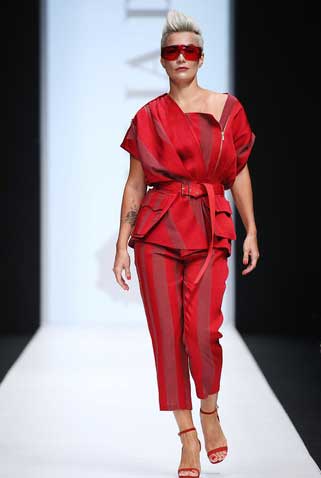
The key objective of this mass media campaign was to draw wide attention to the problem of the HIV/AIDS epidemic in Russia. Every hour ten people get infected with this virus across Russia.
Top Russian bloggers and celebrities joined their efforts with designers and took part in discussing the issue across social media. Designers of MBFW Russia presented a capsule collection of T-shirts, while bloggers posted their campaign messages wearing these T-shirts. International media partners also took part in this awareness raising campaign in the matter of early HIV testing and treatment seeking.
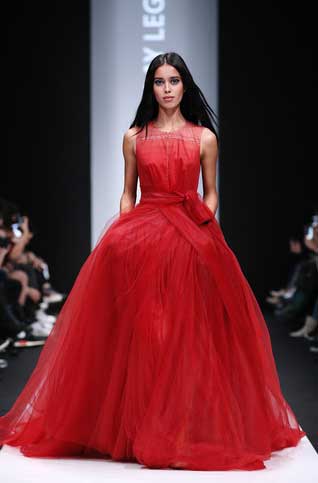
The aim of the campaign is to focus on every aspect: the state support of treatment programs, awareness campaigns for young people, protection means, advanced treatment methods, tolerance toward HIV-positive people, abandoning stereotypes associated with this problem.
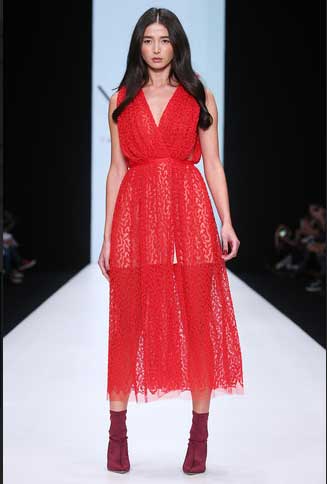
The population of Russia exceeds 146 million people. Nine lakh of them are currently HIV-positive.
Russian Fashion Council runs Mercedes-Benz Fashion Week Russia, the biggest and most widely media-covered fashion event in Russia and Eastern Europe.
"Major link-up between luxury and streetwear fashion companies have signaled a new era of growth in the world of apparels. The recent deal of claiming 50 per cent stake in Supreme by private equity firm The Carlyle Group is a testimony of this. Additionally, Supreme collaborated with Louis Vuitton on a limited-edition collection of accessories in January this year. Similarly, Jil Sander announced in April that Luke and Lucie Meier would be the new creative directors behind the brand, which further substantiates their foray into the streetwear."
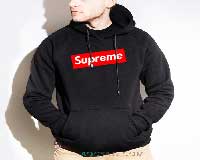
Major link-up between luxury and streetwear fashion companies have signaled a new era of growth in the world of apparels. The recent deal of claiming 50 per cent stake in Supreme by private equity firm The Carlyle Group is a testimony of this. Additionally, Supreme collaborated with Louis Vuitton on a limited-edition collection of accessories in January this year. Similarly, Jil Sander announced in April that Luke and Lucie Meier would be the new creative directors behind the brand, which further substantiates their foray into the streetwear. Last year, the global market for personal luxury goods failed to grow for the first time since the financial crisis, plateauing at $293 billion. This is the reason so many luxury brands are stepping into streetwear to expand markets.
The re-release phenomenon
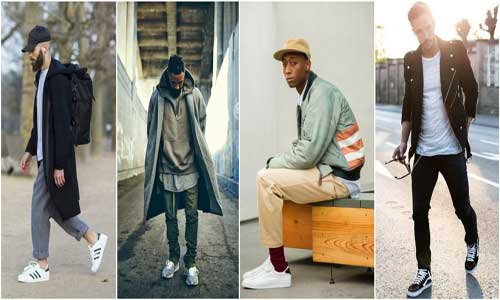
Last month, Ralph Lauren re-released its cult-loved Polo 1992 Stadium collection, which included hoodies and T-shirts with the famous ‘P-Wing’ logo. The recurring limited-product release system, which operates outside of the traditional sales seasons, was first brought and honed stateside by Supreme. These days everyone uses this system be it Nike or Kylie Jenner. Claire Waight Keller, the new creative director of Givenchy, also informed a media daily that she plans to release monthly capsule collection drops while at the helm.
Talking about this move, Ashwin Deshmukh, Co-founder, Hungry, Inc, explains there’s no really great creative coming out of any of the big houses, so they’re using the drop model to create artificial scarcity and regain excitement. Experts point out brands are elevating simple items like T-shirts to coveted status and using more of the playful, referential graphics that are typical of streetwear.
Newer luxury designers, like Demna Gvasalia of the buzzy Vetements, are coming up with an altogether new approach to runway fashion. They want to bring out apparels for the masses whatever is showcased on a luxury brand’s runway. Fashion experts feel by operating like this, brands can create more dynamic relationships with their customers. More specifically, streetwear now has a seat at the table.
On the contrary, some feel the problem with luxury brands tapping into streetwear is the they lack of authenticity. Authenticity and lifestyle are the core of streetwear. That’s why streetwear companies exist, and it can’t be borrowed. Deshmukh also agreed that luxury brands lack the organic, enthusiastic culture that many streetwear brands are built on.












